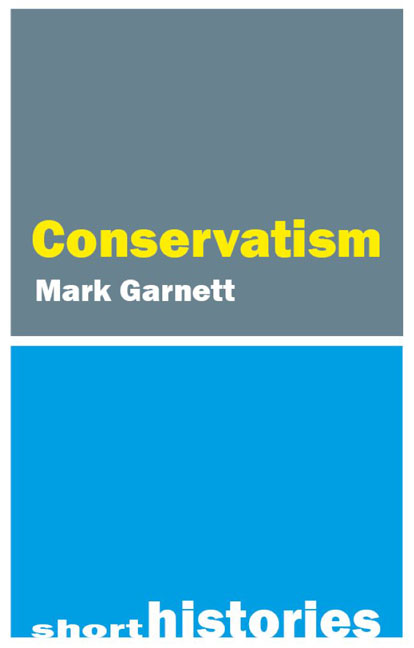Book contents
- Frontmatter
- Contents
- Preface
- 1 The contestable conservative tradition: Burke to Southey
- 2 The Conservative Party from Peel to Salisbury
- 3 “Converging streams”: British conservative thought from Southey to Cecil
- 4 The Conservative Party, 1902–45
- 5 “We must have an ideology”: conservatism since the First World War
- 6 The Conservative Party since 1945
- Conclusions: “Is conservatism dead?”
- Chronology of conservatism and the Conservative Party
- Further reading
- Bibliography
- Index
Conclusions: “Is conservatism dead?”
Published online by Cambridge University Press: 20 January 2024
- Frontmatter
- Contents
- Preface
- 1 The contestable conservative tradition: Burke to Southey
- 2 The Conservative Party from Peel to Salisbury
- 3 “Converging streams”: British conservative thought from Southey to Cecil
- 4 The Conservative Party, 1902–45
- 5 “We must have an ideology”: conservatism since the First World War
- 6 The Conservative Party since 1945
- Conclusions: “Is conservatism dead?”
- Chronology of conservatism and the Conservative Party
- Further reading
- Bibliography
- Index
Summary
By 1926, the descendants of Sir Robert Peel no longer occupied the property, Drayton Manor, whose purchase had guaranteed the family a seat in the House of Commons. Peel's stately pile was pulled down; only the clock tower remained to record the passing of time since the composition of the Tamworth Manifesto. After a sale in 1947 Drayton Manor was redeveloped as an amusement park. In 2020, while Boris Johnson's Conservative government was facing up to the task of “taking back control” from the EU, Peel's old property was acquired by a company with headquarters in Paris.
Just two years before the destruction of Drayton Manor Stanley Baldwin had evoked the sights and sounds of England. To the immemorial cry of the corncrake and the plough team rumbling over the hill, he could have added the destruction of historic houses as a phenomenon which was becoming increasingly familiar. The new burden of taxation, thanks particularly to death duties, had taken its toll on the aristocracy. The old ruling class was losing what was left of its political power and its fate was a matter of public indifference; the idea of preserving the past as a resource for future generations only took root after the Second World War. In England, more than a thousand historic houses were demolished during the twentieth century, and the losses in Scotland were proportionally higher.
These developments obviously held much more than symbolic importance, yet rumours of the death of “Conservative England” only began to circulate among journalists after the party's mauling in the 1997 general election (Wheatcroft 2005). Evidently the assumption that the Conservative Party always embodied “conservatism” had become so prevalent that such commentators would not be able to certify the death of an ideological tradition until the organization finally disbanded or (as it could easily have done on several occasions since the 1830s) adopted a less misleading name. It was not suggested that, in the process of killing the Liberal Party in the first half of the twentieth century, the Conservatives had found it necessary to adopt the ideological outlook of their less fortunate rivals.
- Type
- Chapter
- Information
- Conservatism , pp. 163 - 176Publisher: Agenda PublishingPrint publication year: 2023

